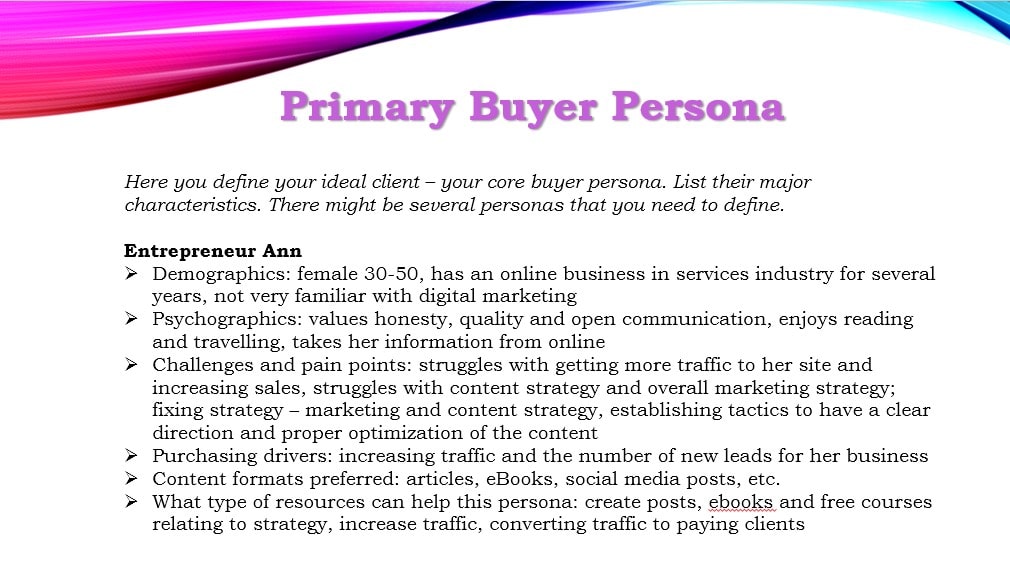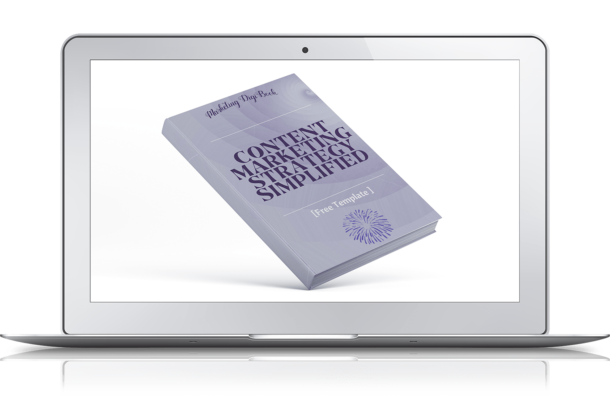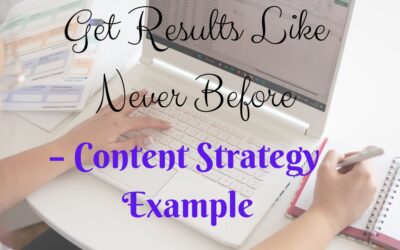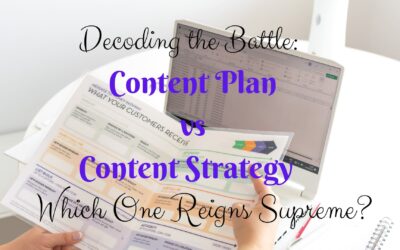Developing a content strategy is a complex process that involves several stages and the creation of solid content strategy deliverables that will propel the business further.
It has to start with an in-depth audience and market research. Marketers need to set specific, actionable, and attainable goals. A strategy should provide content creators with effective tactics for brand positioning. Finally, a good content strategy has to include actionable guidelines for creating, distributing, and managing content.
Undoubtedly, doing these things is a complex task. And doing it right necessitates a data-driven, tactical approach. Ideally, that approach allows businesses to achieve their content goals.
When building a content marketing strategy, marketers have to supplement it with key content strategy deliverables. These documents help guide creators and collaborators through the content production process. And they allow them to enforce a plan that is fully outcome-oriented.
This article will help you understand content strategy deliverables. It will cover different types of documents and their function in your marketing plan. Lastly, it will provide tips on incorporating these outputs into your system.
What Are Content Strategy Deliverables? Definition and Importance
What’s the worst thing you can do when planning your content marketing approach? It’s allowing yourself to take shots in the dark.
Yes, intuition can be powerful. However, a successful content plan requires a highly focused approach. Ideally, one that allows you to track and measure outcomes on multiple plains.
That’s where deliverables come in.
The concept of deliverables refers to any tangible or intangible output produced during a project. In the context of content marketing, these documents:
- Guide teams through the production and distribution process.
- Set KPIs for measuring success.
- Ensure that each content marketing activity aligns with your brand’s business goals.
Types of Content Strategy Deliverables
Like any other strategic guideline, a content strategy deliverable must be:
- Specific.
- Measurable.
- Relevant.
So, if it is to serve your business, it needs to tie in with the different elements of your marketing plan.
With this in mind, you need to produce several types of content strategy deliverables to ensure a seamless marketing process.
Existing Content Audit Report
The number one priority for brands developing content strategies — especially those that have already produced and distributed resources as parts of their marketing tactics — is to conduct and compose an in-depth content audit report.
Study your existing content and its performance in key areas. This can help identify what your business has been doing right (or wrong) in its content strategy. More importantly, it can uncover valuable opportunities to allow your content to go from average to exceptional with just a few tweaks.
Here’s what to include in your content audit report:
Inventory
Creating a comprehensive list of all existing content on your website is an excellent way to gauge quantity, quality, and performance. Moreover, it’s an effective way to determine whether your resources need updates or your website’s content section needs restructuring to better align with the buyer’s journey.
Furthermore, conducting a content inventory is a great way to identify outdated, duplicate, or irrelevant pieces on your website. It should be a crucial document during the later stages of your content strategy, particularly when determining what pieces to include in your content calendar.
Traffic Data and SEO Performance
Knowing how many people are interacting with your resources (as well as where they’re coming from and how they’re discovering your pieces) is essential info for developing a highly successful content strategy. It’s also a great place to start if you want to invest in content marketing to boost brand and product awareness.
If you decide to hire a B2B SEO agency to grow your startup, expect to receive this deliverable as part of their service.
User Intent Alignment
Developing a content strategy that drives results requires that you invest in resources for each stage of the buyer’s journey. By studying how your existing content aligns with user intent, you can check how blog posts and content pages relate to your audience’s intended outcomes.
For example, the FAQ section of the Invest page on CapitalPad is perfectly optimized to align with the needs of prospects populating the lowest stages of the sales funnel.
On the other hand, something similar to Jetboil’s How to Make Camping Coffee will be more suited for building product awareness. That’s because it aligns with the informational search intent of people populating the topmost stages of the marketing funnel.
Audience Personas

Any content marketing strategy — especially a successful one — necessitates an in-depth audience understanding. After all, the only way to ensure your content aligns with your target audience’s needs and aspirations is to comprehend those needs and aspirations in the first place.
For this reason, use deliverables to identify and describe your brand’s audience personas. Then, invest in high-quality content that aligns with each target group’s priorities to ensure maximum engagement and conversion rates.
Generally, there are a few key customer persona characteristics to include in your documentation:
Demographic Data
Define each audience personas’ age, gender, income level, occupation, and geographic location. This will allow you to tailor marketing messages in a way that will be relevant to these potential customers and prevent you from spending your budget on campaigns with poor performance.
Online Behavior
Most consumer groups have varying tendencies in online behavior. For example, different age groups populate different social networks. They prefer different content formats. And some generations even have specific preferences regarding how they want to interact with branded content.
Gen Z, for instance, prefers community-driven marketing content. That’s why many businesses vying for their attention heavily invest in sourcing user-generated content that is effective at building brand-consumer relationships.
Psychographic Information
Today’s consumers base their shopping behavior on their interests, beliefs, and values. For example, more than 80% of people are willing to pay more for sustainable products.
Identifying and understanding these sets of beliefs can be hugely beneficial in allowing you to develop a successful content marketing strategy. Plus, it can benefit your product development process — especially when trying to break into new or competitive markets.
Additionally, note that identifying customer personas allows you to create unique content covering niche topics — like The Top 4 Hard Money Lenders in Asheville, North Carolina, article on Smash.
This tactic makes it possible to produce tailored content. This is essential, as 71% of consumers expect personalization, and 76% become frustrated when brands fail to deliver it.
Invest In Your Business
Your Content Strategy Doesn’t Deliver the Expected Results?
Content Calendar
If there’s one irreplaceable document you need in your content strategy, it has got to be a content calendar.
As an organizational method that ensures you’re publishing resources consistently and in a logical order, an editorial calendar can hugely contribute to positive content marketing outcomes.
Even more, when combined with audience insights, a content calendar can reveal ideal distribution channels, posting times, and content formats, helping you get the biggest bang for your buck from your marketing efforts.
Another benefit of having a content calendar to consult during the production and distribution process is that it can help you predict and keep up with seasonal trends.
For instance, when publishing blog posts that get seasonal upticks in consumer interest — like the Best Gifts for Dads from Men’s Health — it’s not just important that they’re online when that uptick in interest happens. Even more importantly, it’s essential that they target the right search terms and even show publication and update dates so that readers know they’re relevant at the time of reading.
A content calendar can help you predict these periods of intensified consumer interest and give you enough time (along with some guidelines) to prepare in the best way possible.
Visual Style, Brand Voice, and Tone Guides
Consistency is key in content marketing. If you want to invest in content that can boost brand awareness, elevate trust, and build relationships with your prospects, you need to ensure your content adheres to a predetermined set of guidelines.
On the one hand, these guidelines need to align with your branding strategy. However, it’s also important that they resonate with your target audience’s preferences and reflect your brand’s unique value proposition.
Style guides are a content strategy deliverable that can make it easy for your team to remain true to your brand’s visual identity, voice, and tone.
Furthermore, if your business outsources any aspect of its digital marketing activity — from content creation to video editing to social media management — this document will be one of the keys to staying true to your brand messaging.
It’s also worth noting that this document will be irreplaceable during the editorial process. It will provide your marketing team with a set of rules on how to format for accessibility and readability.
Moreover, you can include any necessary distribution channel protocols in this deliverable — especially if your brand does something similar to Wendy’s. This brand clearly uses different approaches on Instagram vs. X, with the former being more commonly used to publish commercial messaging, while the latter serves the purpose of community building and sparking conversations.
Key Performance Indicators
Lastly, a well-developed content marketing strategy requires a well-thought-out system that makes it possible to measure and analyze performance.
By defining and including relevant metrics (like engagement rates, traffic, and conversion rates) in your deliverables, as well as specifying what tools you use to study content performance, you can collect data on your digital marketing activity’s effectiveness and make informed decisions for optimizing performance.
Final Thoughts: Utilizing Content Strategy Deliverables to Achieve Your Business Goals
Although you might be confident in your content marketing plan and don’t feel like you need to produce any deliverables, the time may come when these make or break your attempts to boost brand awareness or engage your target audience.
Even more importantly, these documents are crucial for teams that involve multiple content creators or editors. And they’re an irreplaceable part of a cohesive content strategy for brands that publish guest posts on their blogs.
Finally, if your business goals include expansion or a sale exit, you will need these deliverables to guarantee a smooth transition.
Producing (and regularly updating) these documents may not be your top priority — especially if you’re performing multiple jobs within your small business.
Nonetheless, having them on hand is the best way to guarantee a cohesive marketing plan. It’s also a great way to elevate your content’s quality and to make it easier to bring on collaborators once the moment is right.





